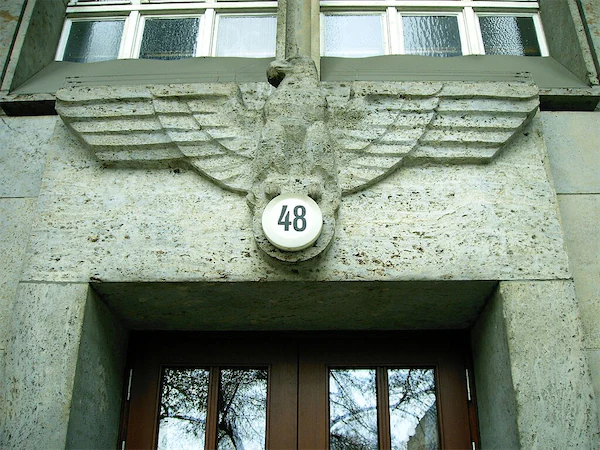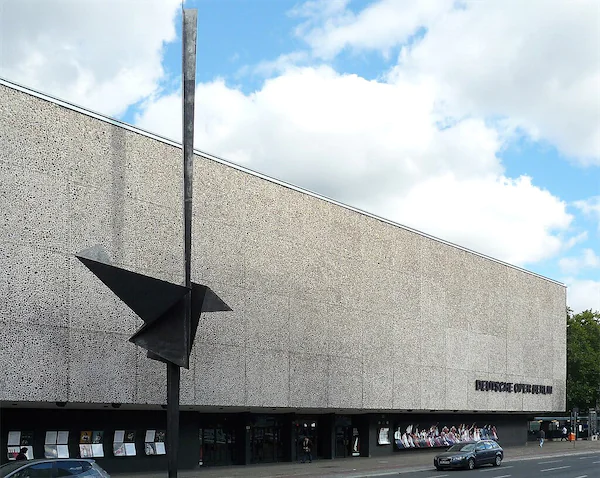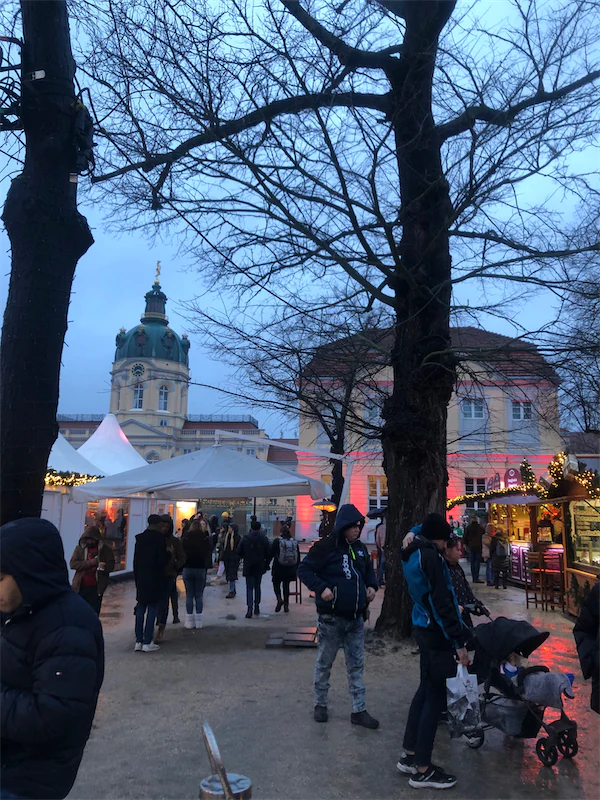Once the richest city in the Kingdom of Prussia, Charlottenburg still displays its splendour today, from the Tiergarten to the graceful palace. We can marvel at outstanding architecture from Baroque to Brutalism, discover hidden gems in wide avenues and narrow alleyways and celebrate the winter festive season with mulled wine beneath the palace dome.
Inspired by Parisian boulevards, the Bismarckstraße was developed into an imposing axis through Charlottenburg during the Empire. In addition to several remarkable buildings, we are particularly interested in the candelabras designed by Hitler's principal architect Alber Speer, that always line the street at the same height, regardless of its topography. The formally austere design with its striking motifs of glowing urns and pine cones allows us to better understand how the cult of the dead functioned, which was central to the transformation of society during the Nazi era.


The Charlottenburg tax office is housed in another architectural testimony to the National Socialists. The swastika in the firm grip of the imperial eagle is provisionally concealed by the backlit house number, but the portico of the otherwise unadorned administrative building deserves our attention: the simple perforated façade of the tax office, designed by architects Brucker and Keppler in 1939, is interrupted by a colossal portal niche extending over three storeys. It attempts an imposing gesture with pillars and shell limestone panelling that fails to compromise with the surrounding buildings. Can we thus recognise structures from totalitarian times even if we had no historical facts to go on?
The access to the Deutsche Oper (1957-61) seems to have been designed by architect Fritz Bornemann as a metaphor for transcendence: The entrance to the underworld leads through the relatively low glass front under a massive, cantilevered concrete cuboid up to a foyer glazed at the sides, which is shielded from the main street as a sublime upper world that in turn leads up to the otherworldly concert hall, which focusses the audience's attention in one point on the stage. In this way, we recognise the guiding of those entering the building as the overarching design principle of the brutalist post-war building.


We can also study the aesthetics of control at the stately Charlottenburg Palace: As we walk along Schlossstraße towards Charlottenburg, two neoclassical barracks appear in our line of vision, their domes already lending visual authority to the palace's projecting wings. On the other hand, we can interpret the towering tambour dome with its surrounding crowned portholes as the all-seeing eye of absolutism. Regardless, we are happy to take in the Prussian splendour while we warm ourselves with mulled wine in the cour d'honneur.
